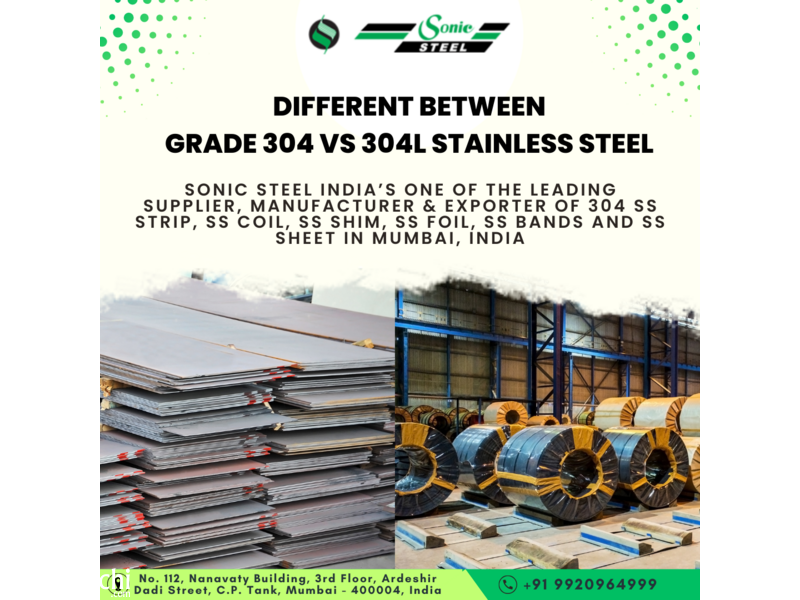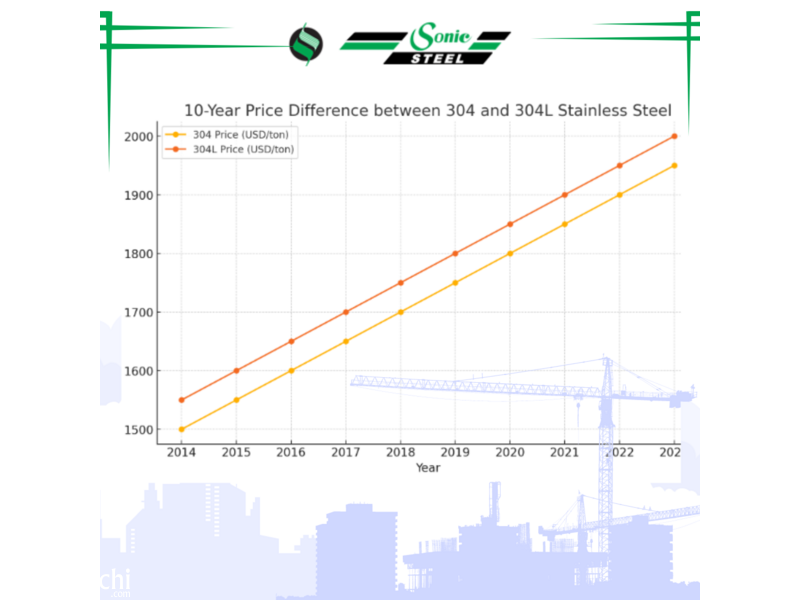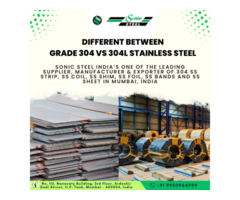Introduction:
In the modern world, stainless steel is ubiquitous, being used in everything from kitchen appliances to industrial machinery. One of the most common grades of Stainless steel 304, as well as its low-carbon variant, 304L. These two grades are similar, but they differ in subtle but crucial ways that make them suitable for varying applications. To understand the disparities and respective strengths of Grade 304 SS vs 304l SS, let’s examine their specifications.
What is 304 Stainless Steel?
304 stainless steel is known for its functions as good austenitic stainless steel because it does not corrode easily and has the proper properties of a machine. For the most part, its makeup consists of chromium, which ranges from 18 to 20%, and nickel, which amounts to about 8 to 10.5%. In addition, there is also a low concentration of carbon, manganese, and silicon in it. Therefore, it has been developed in order to obtain appropriate features of materials that cannot be attacked by rust even when they are under special conditions like water, etc.
The following are the 304 chemical composition:
- Iron = Balance
- Carbon = 0.0 – 0.07%
- Chromium = 17.50 – 19.50%
- Manganese = 0.0 – 2.0%
- Silicon = 0.0 – 1.0%
- Phosphorous = 0.0 – 0.05%
- Sulphur = 0.0 – 0.03%
- Nickel = 8.0 – 10.5%
- Nitrogen = 0.0 – 0.11%
304 SS is a quality material known for its ability to resist corrosion as well as oxidation, which makes it perfect for a wide range of purposes, especially in situations prone to rusting as well as corrosion. It can operate effectively under mild to moderately severe conditions such as chemical substances, freshwater, or atmospheric circumstances.
The food and beverage industry, medical equipment, kitchen appliances, and architectural applications favour
304SS material due to its ease of fabrication and cleaning. Its non-magnetic properties in the annealed condition add to its versatility.
Overall, 304 stainless steel material is a tough and durable suitable for many uses, as it is strong, resistant to rusting, and easy to keep clean.
The Foundation: Grade 304 Stainless Steel:
A stainless steel alloy containing chromium and nickel, 304 Stainless steel is an austenitic stainless steel. Due to SS 304 Chemical Composition, it’s highly corrosion and oxidation-resistant in various environments because it consists of 18% chromium and 8% nickel. Despite its versatility, this alloy is widely used in a range of industries, including architecture and food processing.
Properties of 304 Stainless Steel Grade:
Corrosion Resistance: Grade 304 stainless steel exhibits excellent corrosion resistance, particularly in mildly corrosive environments such as air and freshwater.
Strength and Durability: With its robust composition, Grade 304’s strong and long-lasting construction makes it an excellent choice for applications that require structure.
Ease of Fabrication: Manufacturers prefer SS 304 for its malleability and ease of fabrication, which allows for diverse shaping and forming processes.
Temperature Resistance: Grade 304 is a good corrosion-resistant stainless steel that is resistant to high temperatures. However, prolonged exposure to high temperatures can cause it to become sensitized, which reduces its resistance to corrosion.
The Evolution: Grade 304L Stainless Steel:
The stainless steel 304L, often called Grade “L” because of its low carbon content, is a variation of Grade 304. The ‘L’ signifies a maximum carbon content of 0.03%, which minimizes the risk of sensitization and subsequent corrosion problems. With this variant, corrosion resistance is similar to Grade 304, but some limitations have been addressed, particularly in welding applications.
Grade 304L Stainless Steel Properties:
Reduced Sensitization: Grade 304L has a low carbon content that mitigates sensitization, the precipitation of chromium carbide at grain boundaries, which compromises corrosion resistance.
Weldability: Grade 304L has improved weldability over Grade 304 since it is less prone to carbide precipitation during welding.
Corrosion Resistance: Even though Grade 304L SS offers comparable corrosion resistance to Grade 304, it offers an advantage in environments with frequent welding and high temperatures.
Choosing Between Grades 304 and 304L:
When choosing between SS 304 vs 304L, attention should be paid to the specific requirements of the application. To assist in the decision-making process, consider the following:
Welding Requirements: Due to its reduced sensitization and improved weldability, Grade 304L is preferred for applications requiring welding. By ensuring structural integrity, it minimizes the risk of weld decay.
Corrosive Environment: The 304 vs 304l corrosion resistance is commendable in environments where corrosion is a significant concern. The SS 304L may, however, provide additional assurance against sensitization-related issues if the application exposes it to corrosive agents or elevated temperatures frequently.
Cost Considerations: Since Grade 304L stainless steel has a specialized composition, it may cost a little more than Grade 304ss material. It is essential to evaluate budgetary constraints along with performance requirements.





 Loading
Loading














